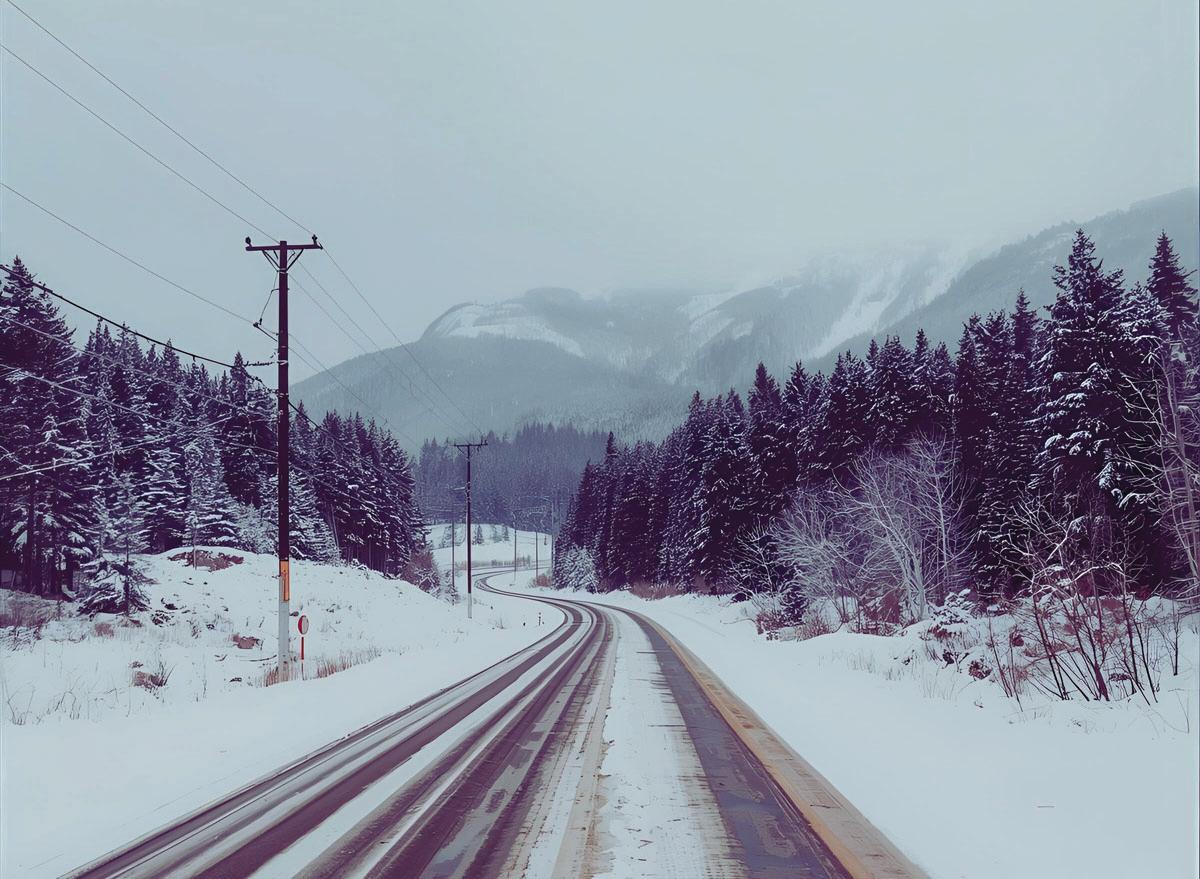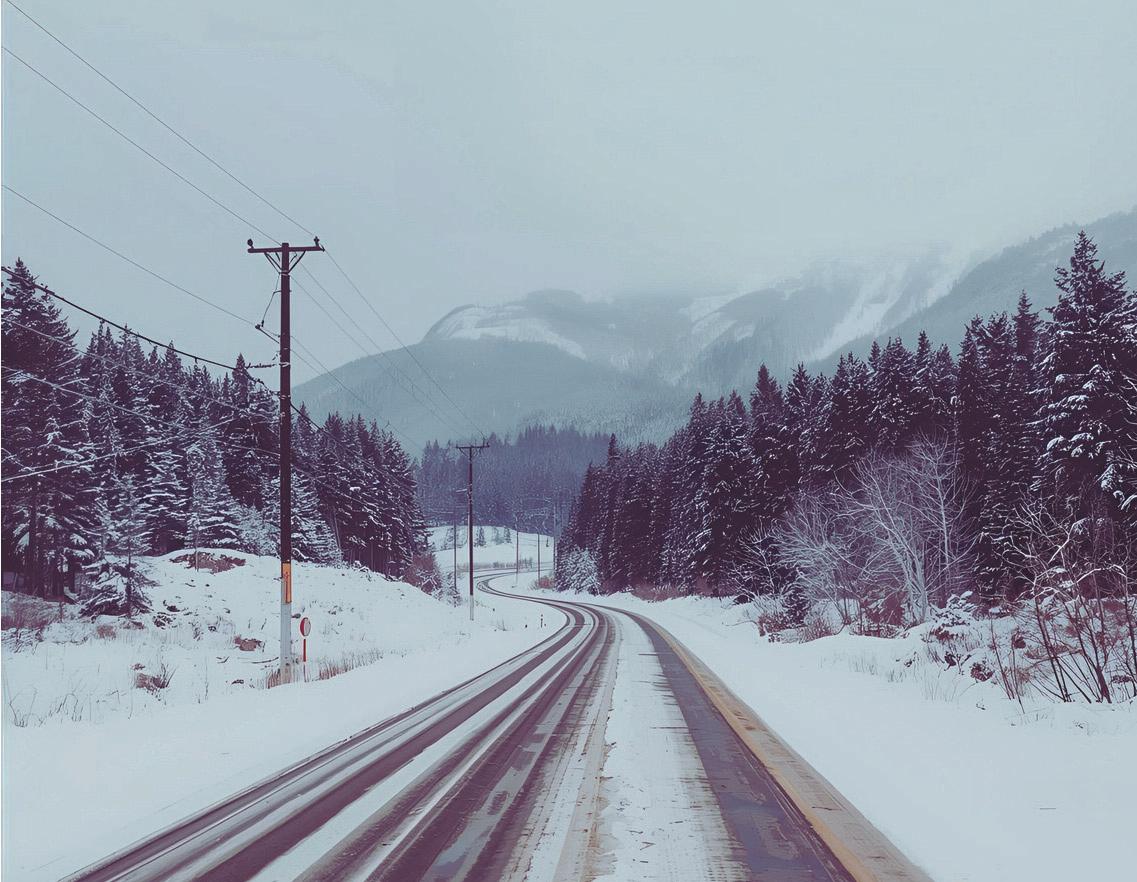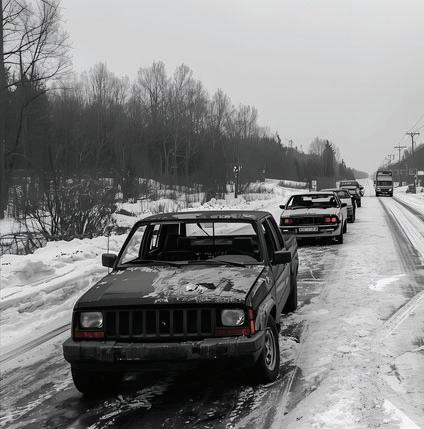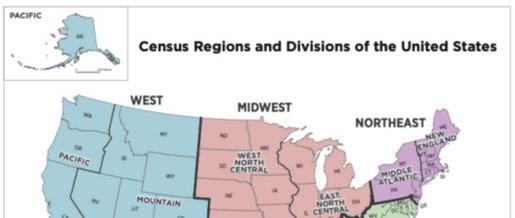







Interviewby AnaPaulaMontanha,Editor-in-Chief
AnaPaulaMontanha,Editor-in-ChiefofHuman CapitalCareerTrendsMagazine,interviewedFabiano GomesdosReis.Mr.dosReissharesinsightsfromhis expertiseinsanitationsystems,railwaylogistics,and cold-climatepavementrehabilitation,directly addressingcriticallaborshortagesininfrastructure resilienceacrossnorthern-tierstates.
AcrossthenorthernstatesoftheU.S.,climate volatilityposesmountingchallengestocivil infrastructure.Roadsbuckleunderfreeze–thaw cycles.Railwaysrequireintensivemaintenanceto remainoperationalinsnow-coveredregions, whilesanitationsystemsriskfailuredueto extremegroundtemperatures.Inresponse, nationalandstateagenciesareaccelerating investmentincold-resilientengineering.TheU.S. InfrastructureInvestmentandJobsAct(IIJA) earmarkedmorethan$110billiontoward transportationupgrades,prioritizingareas impactedbyseasonaldeterioration.Yetamid thistransformation,oneelementremainsin criticalshortage:engineeringtalentwithcoldweatherspecialization.
AccordingtotheU.S.BureauofTransportationStatistics(2023), over46%ofAmericanroadsarelocatedinregionsexperiencing frequentfreeze–thawconditions.Thesecyclicaltemperature shiftsreduceasphaltpavementlifespanbyupto50%,with annualmaintenancecostsexceeding$10billion(Federal HighwayAdministration,2022).IntheMidwestandNewEngland regions,recurringwinterstresshaspromptedmassinvestment inresurfacing,snowmeltdrainage,andstructuralinsulation upgrades.
Railwaysareequallyaffected.TheU.S.Departmentof TransportationandregionaloperatorslikeAmtrakreportthat frostheaveandsnowobstructioncontributetoannualdelaysand trackdegradation.Meanwhile,coldtemperaturesthreaten undergroundsanitationnetworkswithpipefracturesandsystem blockages,particularlyinoldercitieslikeBostonandMinneapolis.
Thisnationalvulnerabilityhascreatedstronglabordemandfor civilengineerswithexpertiseincold-climateinfrastructure.The BureauofLaborStatistics(2024)projectsa6%employment growthforcivilengineersby2033,withabove-averagedemand innorthern-tierstates.However,adeeperanalysisusinglifecycle costanalysis(LCCA)revealsthatpreventiveinvestmentin specializedengineeringreduceslong-termfiscalexposure. LCCA,commonlyusedinresilientengineering,quantifiescost savingsderivedfromextendinginfrastructurelongevity, especiallyinclimatespronetoseasonalstressors.
Investingincold-climateinfrastructureexpertiseyieldsstrong economicreturns.A2023cost-benefitanalysisbytheNational InstituteofBuildingSciencesfoundthatforevery$1investedin resilientdesignforcoldregions,thereisa$6returninavoided damage,deferredmaintenance,andreducedsystemdowntime. Projectsthatemploythermalcrackingpredictionmodels, snowmeltdrainagesystems,andfrost-protectedfoundations showanaverageof15%improvementinlifecyclecostefficiency comparedtotraditionallyengineeredassets.
Thestrategicdeploymentofadvancedresurfacingtechniques— suchas“silkcoat”overlaysandtemperature-gradedasphalt mixtures—extendspavementlongevity,improvespublicsafety, andreducesemergencyremediationcosts.Civilengineerswith specializedtraininginthesemethods,suchasFabianoGomes dosReis,offermeasurablefiscalvaluebypreemptivelymitigating failurepoints.

TheHiddenCostofWinter:Freeze–Thaw DamageandInfrastructureDegradation
Cold-climateconditionsposeoneofthe mostunder-recognizedeconomicliabilities toU.S.publicinfrastructure.Repeated freeze–thawcycles—characterizedbythe expansionofwaterasitfreezesandcontracts uponthawing—contributetothestructural fatigueofpavements,sewerlines,railties, andbridges.AccordingtotheFederal HighwayAdministration(2022),thesecycles reducetheeffectivelifespanofasphaltroads by30%to50%,translatingtoanestimated $10billioninannualmaintenancecosts. Thesecostsdisproportionatelyburden northern-tierstates,whichareresponsible forthemajorityofthe2.7millionmilesof publicroadssubjecttofreeze–thawstress.
TheAmericanSocietyofCivilEngineers (2021)reportsthatdeferredmaintenance duetoweather-relateddegradationhas compoundeda$786billionbacklogin highwayandbridgerepairs.Muchofthisis concentratedincoldregions,where emergencyrepaircostsescalateduring winterduetorestrictedaccess,material fragility,andprolongedrecoveryperiods.In theabsenceofpreventativecold-weather engineering,theseexpensesareprojectedto increasebyover20%withinthenextdecade.



Cold-StateSpendingPrioritization
TheInfrastructureInvestmentandJobsAct (IIJA),signedintolawin2021,earmarksover $110billioninfederalspendingforroads, bridges,andwatersystems—withsignificant disbursementsexplicitlyallocatedforstates withextremeclimateburdens.Cold-climate statesarereceivingadisproportionateshareof thesefundsduetotheirheightened vulnerabilityandadvanceddegradationrates.
AccordingtoabreakdownbytheFederal HighwayAdministration,statessuchas Michigan($7.3B),Illinois($9.8B),Ohio($6.7B), Massachusetts($5.4B),Wisconsin($5.2B),and Minnesota($4.5B)areamongthetop recipientsofcold-infrastructurefunds.In Alaskaalone,over60%ofIIJAallocationsare devotedtowinter-resilientroadsystemsand sanitationinfrastructureadaptedtopermafrost andextremesnowloadconditions.
Thesuccessfulimplementationofthese investmentshingesontheavailabilityof engineersproficientintheuniquetechnical demandsofsnowbeltandsub-Arctic construction.YettheexistingU.S.engineering workforcedoesnotsufficientlymeetthisneed. AccordingtotheNationalScienceFoundation, U.S.civilengineeringprogramsgraduatefewer than1,500studentsperyearwithanyformal trainingincold-climateconstructionprinciples. By2030,theU.S.isprojectedtofaceashortfall ofover40,000civilengineerscapableof workinginclimate-sensitiveregions,withmore thanhalfofthatdemandconcentratedincoldweatherstates.
ThepassageoftheInfrastructureInvestmentand JobsActin2021markedawatershedmomentin federalinfrastructurespending.Withtargeted allocationstostateslikeMassachusetts,Michigan, andMinnesota,theactsupportscold-weather pavementoverlays,winter-proofeddrainage systems,andclimate-adaptedwaterinfrastructure.
Furthermore,theU.S.DepartmentofEnergyand EnvironmentalProtectionAgencyhaveintroduced standardsforfrost-protectedshallowfoundations andsnowmeltdrainageoptimization,integrating climateresilienceintopublicworksplanning.These shiftshaverecalibratedhiringcriteria.Stateand municipaldepartmentsnowincreasinglyrequire experienceinthermalcrackingprevention,lift stationdesignforsnow-heavyregions,andclimate modelingforpublicinfrastructure.
Civilengineerswithfield-provenskillsinthese domainsarescarce.TheinabilityofU.S.universities tomeetthisnichedemandhasledtoexpanded recruitmentofinternationalexpertswith specializedexperience.
Specializedcivilengineers,suchasFabiano GomesdosReis,offerexceptionalvaluetothe U.S.economy.Hisexpertiseinsanitation systems,railwaylogistics,andcold-climate pavementrehabilitationdirectlyaddresses criticallaborshortagesininfrastructure resilienceacrossnorthern-tierstates.
From2014to2018,FabianoGomesdosReis heldaleadengineeringrolewithinalarge-scale civilconstructionenterpriseoperatingacross LatinAmerica’spublicinfrastructuresector.In thiscapacity,hedirectedtheimplementationof municipal-scalewaterandsewagesystems, stormdrainagenetworks,androadway resurfacingprojects—manyengineeredto performundertemperature-variable conditionscomparabletothosefoundincoldclimateU.S.states.Theseinitiativesdemanded strictcompliancewithpublicutilitystandards andincludedthedeploymentofliftstations builtforfrostresistanceandsubsurface integrity
Earlierinhiscareer,FabianoGomesdosReis servedinasupervisorycapacityonrailway infrastructureprojectsmanagedbyamajorfirm servicingclientsintheheavytransportationand logisticsindustry.Hisresponsibilities encompassedoperationalplanning, infrastructuremonitoring,andcontinuity assuranceunderadverseweatherconditions. Histechnicalfluencyinasphaltmillingand advancedoverlaytechniques—suchasthe“silk coat”resurfacingmethod—mirrorspractices employedbystateDepartmentsof TransportationinregionslikeMassachusetts andColorado,wherewinter-resilientpavement isastrategicpriority.
Theseaccomplishmentsnotonlyvalidatethe technicalandregulatoryreadinessofFabiano GomesdosReis,butalsoreflecthiscapacityto contributemeaningfullytoU.S.infrastructure resilienceefforts.AsnotedbytheNational InstituteofBuildingSciences,engineerswith operationalexpertiseinthermallyvolatile environmentsplayapivotalroleinadvancing thedurabilityandperformanceofcriticalcivil systemsinclimate-sensitiveregions.
Ourapproachmustintegratematerialinnovationwithpredictivemaintenance.Cold-climate infrastructureisevolvingtowardpreemptiveresilience,notjustreactiverepair.
AspartofHumanCapital’songoingseriesonexecutiveleadershipandindustrytransformation, Editor-in-ChiefAnaPaulaMontanhaspeakswithexpertsshapingthefutureoftheirfields. Specializedcivilengineer,FabianoGomesdosReis,offersexceptionalinsightsaboutcareerand itsimpacttotheU.S.economy.
Howiscivil infrastructureevolving incold-climateregions, andwhatarethe biggestchallenges ahead?
“Thebiggestchallenge isbalancingdurability withenvironmental adaptability.Freezethawcyclesdegrade pavementsanddisrupt watersystems.Our approachmust integratematerial innovationwith predictive maintenance.Coldclimateinfrastructureis evolvingtoward preemptiveresilience, notjustreactiverepair.”
Whatstrategiesshould executivesadoptto stayaheadinthis changinglandscape?
“Theymustprioritize lifecyclecostanalysis andclimatemodeling incapitalplanning. Executivesshould alsoinvestintraining civilengineersin cold-weather constructioncodes andinternationalcase studiestobroaden solutionportfolios.”
Howdoesgovernment policyinfluence infrastructure developmentand workforcegrowth?
“PoliciesliketheIIJA directlyinfluence procurementstandards andhiringpriorities. Whenagencies emphasizeclimate resilience,workforce developmentshiftsto meetthosedemands, andengineerswith provenexpertisein cold-climateprojects becomemorecriticalto publicsector operations.”
Whatroledoes technologyplayin shapingthefutureof cold-climate engineering?
“GIS-basedsnowmelt drainageplanning, thermalimagingfor pavementhealth,and smartsensorsinsewer systemsaregame changers.Technology enablesearlydetection andperformance forecasting,whichcuts long-termcostsand improvessafety.”
Howshouldcivil engineerspreparefor thenextdecade?
“Theymustspecialize. Climateadaptability, projecteconomics,and regulatoryfluencyare nowbaseline expectations. Certificationprograms incold-regiondesign andhands-on experiencewith season-sensitive materialswilldefine engineeringsuccess.”
Howdoesanaging workforceaffectthis sector?
“Itcreates institutional knowledgegaps. Youngerengineers mustbementoredin fieldrealities,suchas snow-removal logistics,subgrade preparationforfrostpronesoils,and emergency infrastructure recovery.Without thattransfer, operationalcapacity suffers.”
Whatmacroeconomic shiftsshouldindustry leadersanticipate?
“Expecthigherfederal andstateinvestments ininfrastructure hardening,especially afterclimate-driven disruptions.Labor shortagesintechnical roleswillintensify.The marketwillfavor engineerswhoblend technicalskillwith environmental foresight.”
Interviewby AnaPaulaMontanha,Editor-in-Chief
Thenextdecadewillwitnessanintensificationof climatepressuresonU.S.civilinfrastructure. Engineerswhocombinethermalmitigation techniques,regulatoryexpertise,andtransnational projectexperiencewilldriveresilienceacrossroad, rail,andsanitationnetworks.Federalagenciesmust prioritizeexpeditedcredentialrecognitionandcrossborderaccreditationforspecialistswhoseskillsalign withnationalinfrastructuresecurityobjectives.
FabianoGomesdosReisexemplifiesthecaliberof expertiseessentialtoovercomingAmerica’smost pressingcold-climateinfrastructurevulnerabilities. Hisspecializedknowledgeinweather-adaptive designandresilientpublicworksreflectsthe strategictalentrequiredtooperationalizethe nation’sclimateinfrastructureagenda.
FederalHighwayAdministration.(2022).ColdClimate PavementandResurfacingGuidelines.
U.S.BureauofTransportationStatistics.(2023). InfrastructureConditionsinFreezingRegions.
U.S.BureauofLaborStatistics.(2024).Occupational OutlookHandbook:CivilEngineers.
U.S.DepartmentofEnergy.(2021).BuildingAmerica ClimateZoneClassifications.
U.S.EnvironmentalProtectionAgency.(2023). StormwaterManagementandCold-Climate Guidelines.
NationalInstituteofBuildingSciences.(2024). Climate-ResilientInfrastructureReports.
ComparedtoScandinaviancountries,wherecoldclimateengineeringisastandardizedspecialty,the U.S.stilllacksaunifiednationaltrainingframework. CountrieslikeNorwayandSwedentrainengineersin permafrostmodeling,insulatedpipenetworks,and predictiveweatherdesignfromundergraduate levels.Incontrast,theU.S.reliesonpostgraduate specializationorfieldexperience.Asaresult,the strategicrecruitmentofinternationallyexperienced engineersbecomescriticaltoclosingtechnical expertisegapsandensuringcontinuityinclimateadaptiveinfrastructureprograms.
Moreover,urbancenterssuchasBoston, Minneapolis,andAnchoragereporthigher maintenancebacklogsduetothecompounded effectsofaginginfrastructureandworkforce attrition.Strategicintegrationofinternational professionalswithprovencold-weatherfield experienceacceleratesrecoverytimelinesand lowerstotalownershipcostsofpublicinfrastructure.
